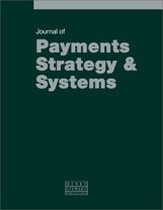Who pays more to use cash?
Abstract
Cash is the only retail payment system that requires no system of accounts for counterparties to transact. The only record of its possession is its tangible presence. Any two parties that can meet face to face can exchange cash without worrying about payment clearing and settlement, default risk, payment fraud, identity theft or systemic risk. But cash has a number of hidden costs that fall disproportionately on the poor and disenfranchised. While the rich pay minimally for accessing cash, the poor and certain demographic groups bear a disproportionate portion of the cost to access cash. Nearly all households get cash from financial institutions, withdrawing bank balances and cashing pay cheques. Households with poor financial access are more likely to make purchases and pay bills in cash, requiring higher cash balances and greater risk. And after years of cash payments leave poor documentation of creditworthiness, cash-heavy households will face higher borrowing costs in the future. This paper explains which US households bear the greater portion of the costs and risks of cash. In the context of comparisons with more evenly cash-dependent economies, such as the emerging markets, the disproportionate spreading of the burden of the cost of cash in the US is even more worrying.
The full article is available to subscribers to the journal.
